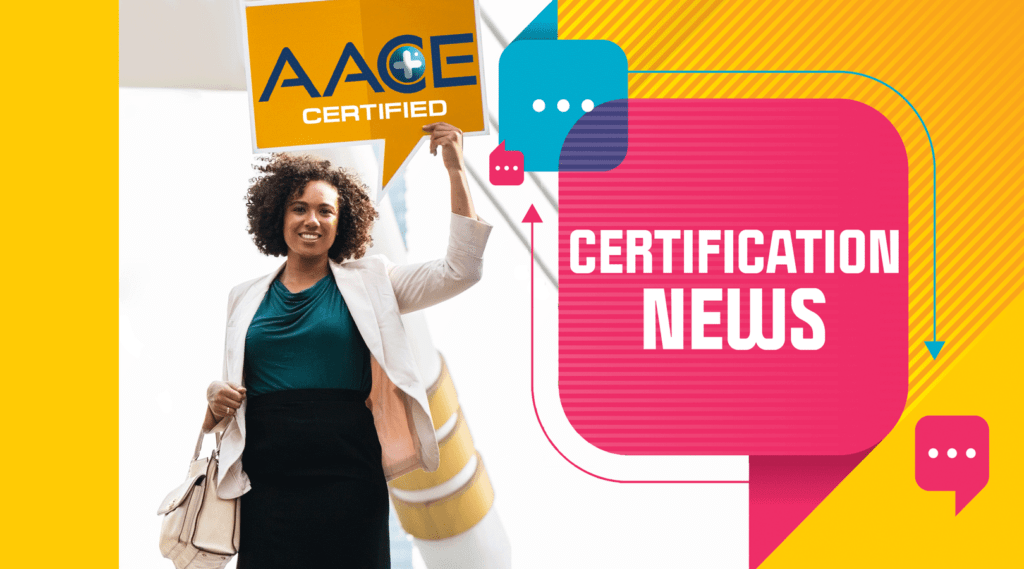Beyond Translation: The Hidden Challenges of Creating Multilingual Exams

Valerie Smith, Senior Credentialing Analyst
The following article is Part 1 of a series related to translation challenges for certification programs
There has been considerable discussion at AACE recently regarding translations, but the translation of exam questions involves much more than simply converting text from one language to another. I had the opportunity to meet with Joy Matthews-López, Ph.D., at the ICE Exchange in Miami. Joy is a psychometrician collaborating with the AACE Certification Board and the Founder and President of JML Measurement and Testing Services, LLC. Her “Best Practices and Technical Issues in Cross-Lingual, Cross-Cultural Assessments: An Evaluation of a Test Adaptation” dissertation has become a standard reference for many credentialing organizations.
Many assume that translating an exam is as simple as converting words from one language to another. However, the process is much more complex. Beyond translation, exams must also be localized and adapted to ensure they are fair, clear, and relevant for test-takers in different regions.
Understanding the Differences: Translation, Localization, and Adaptation
According to the International Organization for Standardization (ISO), translation is the process of converting text from one language to another while maintaining the original meaning (ISO 17100:2015, 2015). This may seem straightforward, but it does not account for cultural differences or variations in terminology.
Localization goes a step further by adjusting content to fit cultural norms, language nuances, and local conventions. The Globalization and Localization Association (GALA) defines localization as adapting content to meet a specific target market’s linguistic, cultural, and functional requirement (GALA, 2023).
Adaptation involves reworking the content to better suit the local audience, sometimes requiring significant changes. Chiara Grassili (2015) highlights that adapting language is crucial for sharing cultural nuances. When a situation from one culture doesn’t exist in another, we can creatively adjust the reference while keeping the original meaning.
Matthews-López (2003) emphasizes that effective cross-lingual, cross-cultural assessments require not just translation but a strategic adaptation process to ensure the validity and fairness of exams across different languages and cultures.
Why Simple Translation Isn’t Enough
A properly localized and adapted exam ensures fairness, clarity, and cultural appropriateness. Here’s why these extra steps matter:
- Cultural Relevance and Understanding
- A direct translation may not make sense to test-takers from different backgrounds.
- Questions need to reflect familiar scenarios and avoid confusing references.
- Example: “Pavement” in the United States is a road surface on which cars drive, while “pavement” in New Zealand is a sidewalk.
- Fairness and Clarity
- Some words or phrases do not have direct equivalents in other languages.
- Localization ensures that all candidates interpret the questions the same way, reducing confusion.
- Example: While other countries may have businesses where you can stay in your car while retrieving food and prescriptions or doing your banking, a “drive-thru” is a uniquely American word.
- Legal and Educational Standards
- Some exam content must align with local laws and industry standards.
- Without adaptation, an exam may test knowledge that is not relevant to the candidate’s region.
- Example: CPA (Certified Public Accountant) in the United States and CPA-Canada (Chartered Professional Accountant) in Canada share the acronym but have different certification requirements.
- Avoiding Unintentional Bias
- Certain topics may be sensitive or inappropriate in different cultures.
- Localization helps remove content that could be offensive or misleading.
- Example: The term “pants” in the United States and the United Kingdom are entirely different garments.
The Steps Involved in Localizing an Exam
Because of these challenges, translating an exam requires multiple steps, including:
- Conducting a Job Task Analysis (JTA) to understand what knowledge and skills are important in the local market. According to the Institute for Credentialing Excellence, a JTA helps define the competencies required for a profession and ensures exam content aligns with industry needs (ICE Handbook, 2023).
- Researching cultural and linguistic differences.
- Working with professional translators and local experts.
- Adjusting examples, units of measurement, and legal references.
- Testing the localized exam with sample candidates before full implementation.
Is Translating an Exam Always the Right Choice?
Before deciding to translate an exam, organizations must consider the following:
- Is there an adequate candidate pool? Developing a localized exam is costly, and the demand must justify the expense.
- Can the certification be maintained? If the country does not have an established system for ongoing certification or professional development, translation may not be practical.
Conclusion
While translating an exam might seem like a straightforward solution, the reality is far more complex. Ensuring fairness, accuracy, and cultural relevance requires extensive research, collaboration, and testing. The process involves multiple layers of localization and adaptation to ensure that candidates, regardless of their background, have a fair and meaningful assessment experience. Given the significant time, cost, and expertise involved, translating an exam is not a decision to be made lightly and may not always be feasible. Each organization must carefully evaluate whether the effort aligns with the long-term sustainability and integrity of the certification program.
Postlude by Charles E. Bolyard, Jr., CCM, FCMAA, PSP, CFCC, FAACE, Hon. Life, Certification Board Chair
Valerie Smith’s article offers a clear and insightful overview of the complex process of translating certification exam questions into multiple languages—a critical challenge for credentialing organizations. In upcoming articles, AACE will share other key operational challenges related to administering translated exams while maintaining the high standards required for independent certification accreditation.
Resources:
- Matthews-López, J. L. (2003). Best Practices and Technical Issues in Cross-Lingual, Cross-Cultural Assessments: An Evaluation of a Test Adaptation [Doctoral dissertation, Ohio University]. OhioLINK Electronic Theses and Dissertations Center. http://rave.ohiolink.edu/etdc/view?acc_num=ohiou1082054025. Accessed 10 Jan 2025
- ISO 17100:2015 Translation services – Requirements for translation services. International Organization for Standardization, 2015. https://www.iso.org/standard/59149.html. Accessed 16 Jan 2025.
- “Localization”. Globalization and Localization Association. https://www.gala-global.org/knowledge-center/about-the-industry/language-services. Accessed 4 Mar 2025.
- Grassilli, Chiara. “Adaptation.” Translator Thoughts, https://translatorthoughts.com/2015/10/adaptation/.Accessed 16 Jan 2025.
- Certification: The ICE Handbook. 3rd Edition, Institute for Credentialing Excellence, 2019.
Rate this post
Click on a star to rate it!
Average rating 0 / 5. Vote count: 0
No votes so far! Be the first to rate this post.

